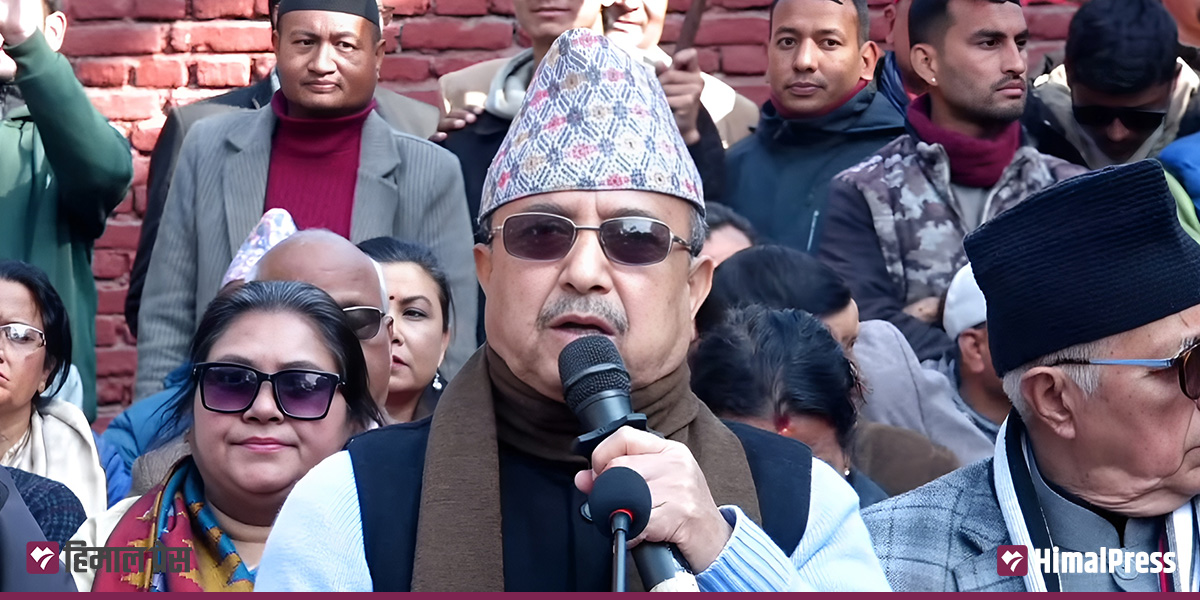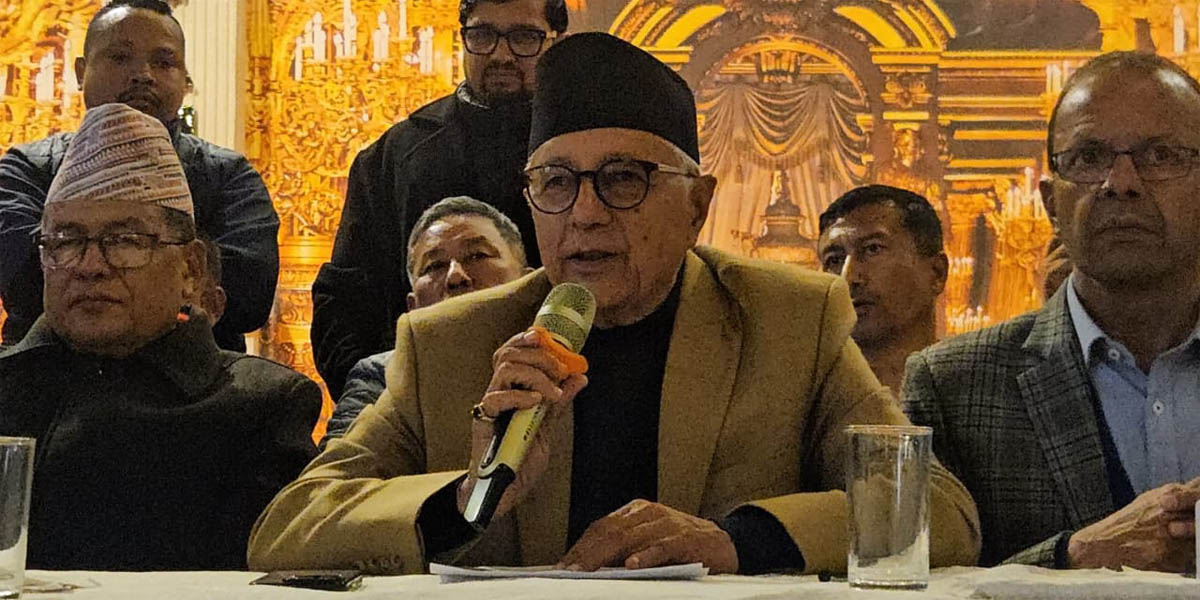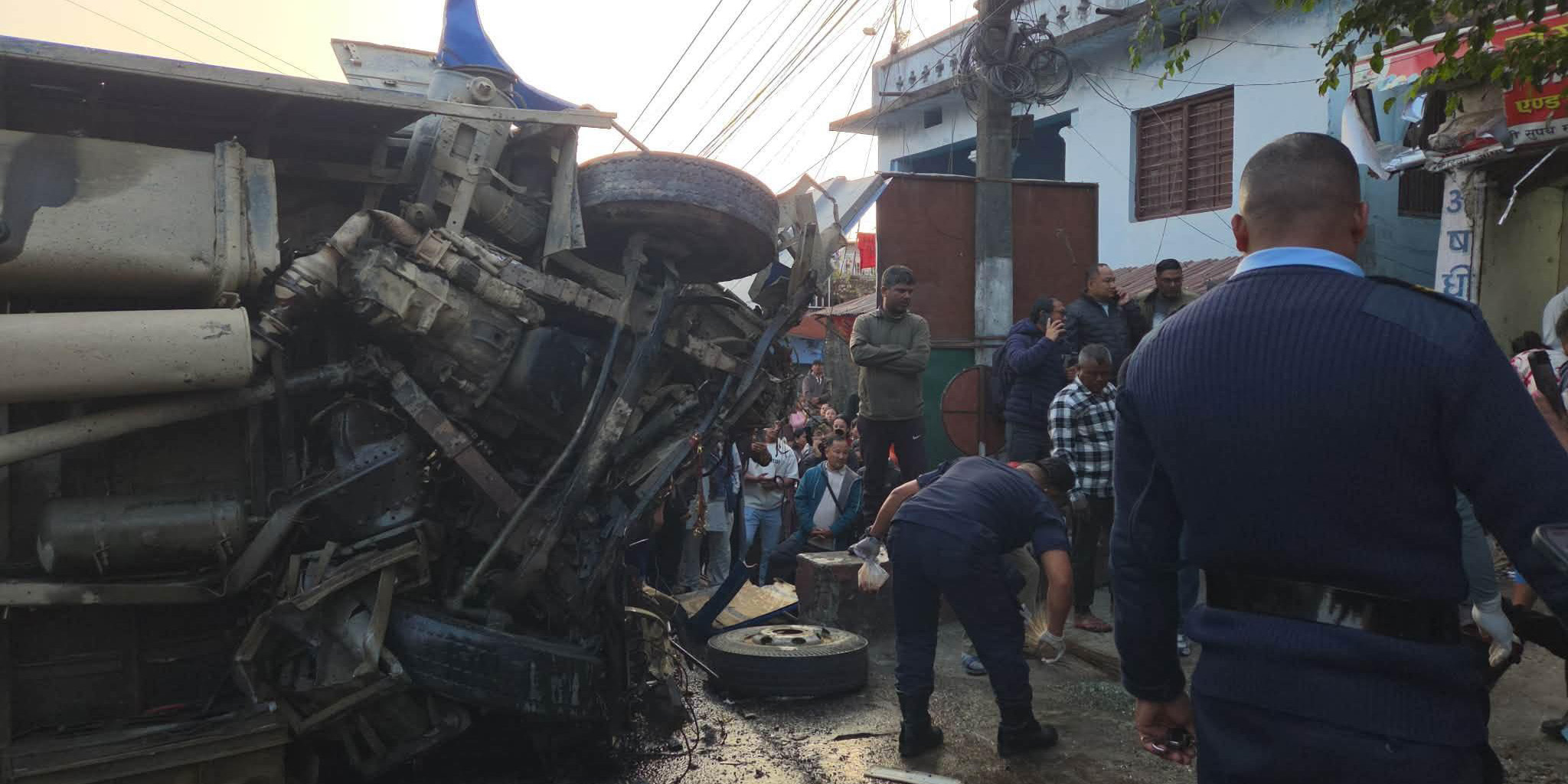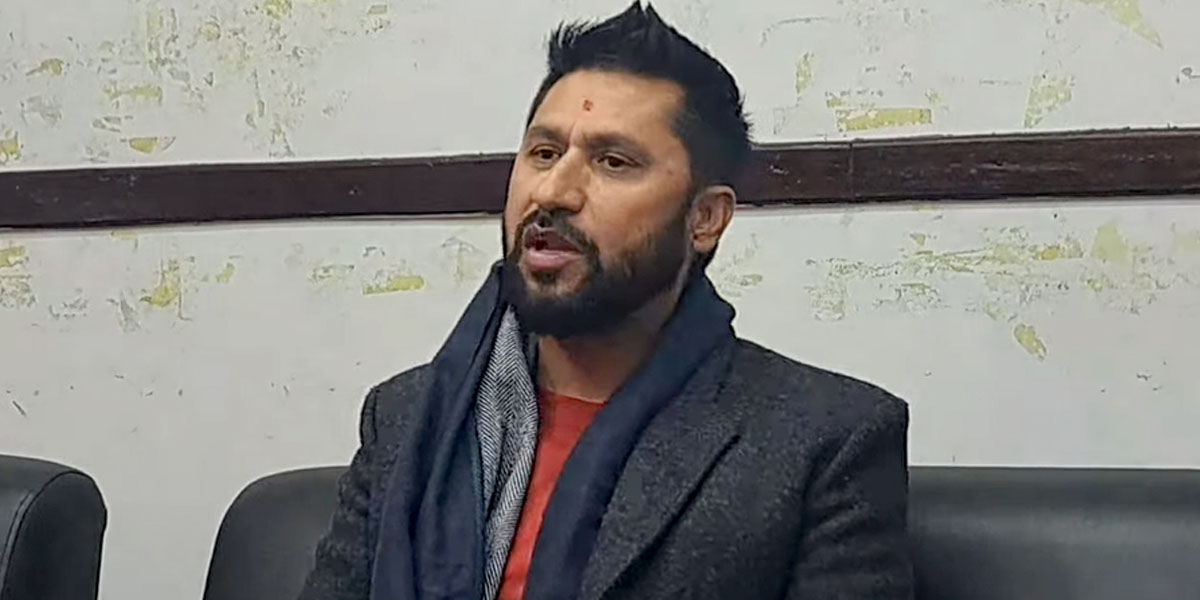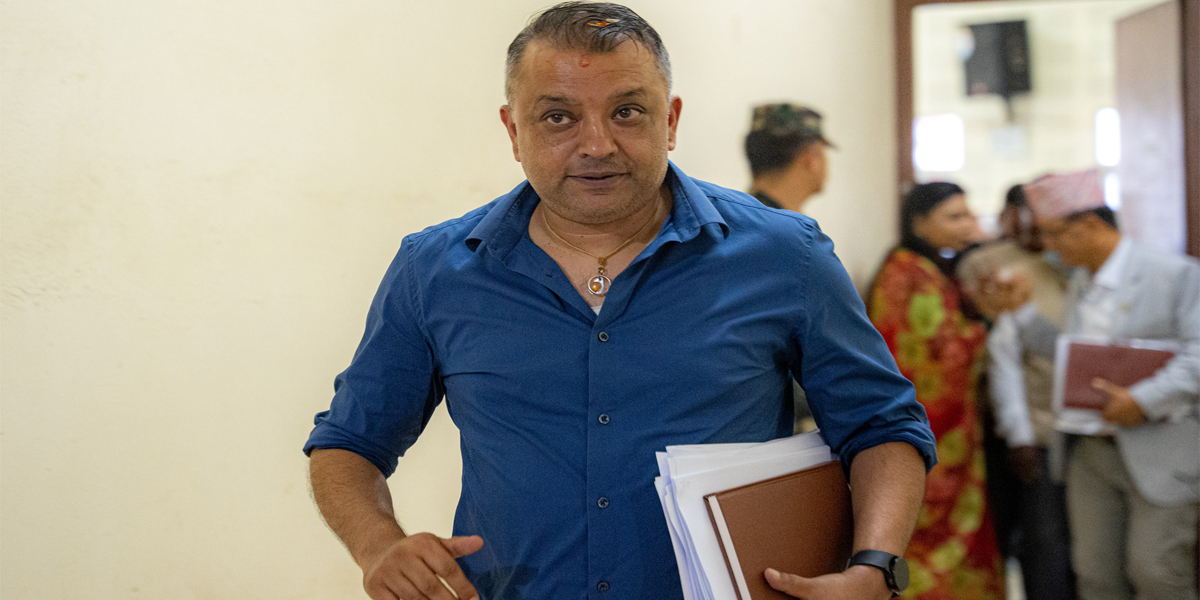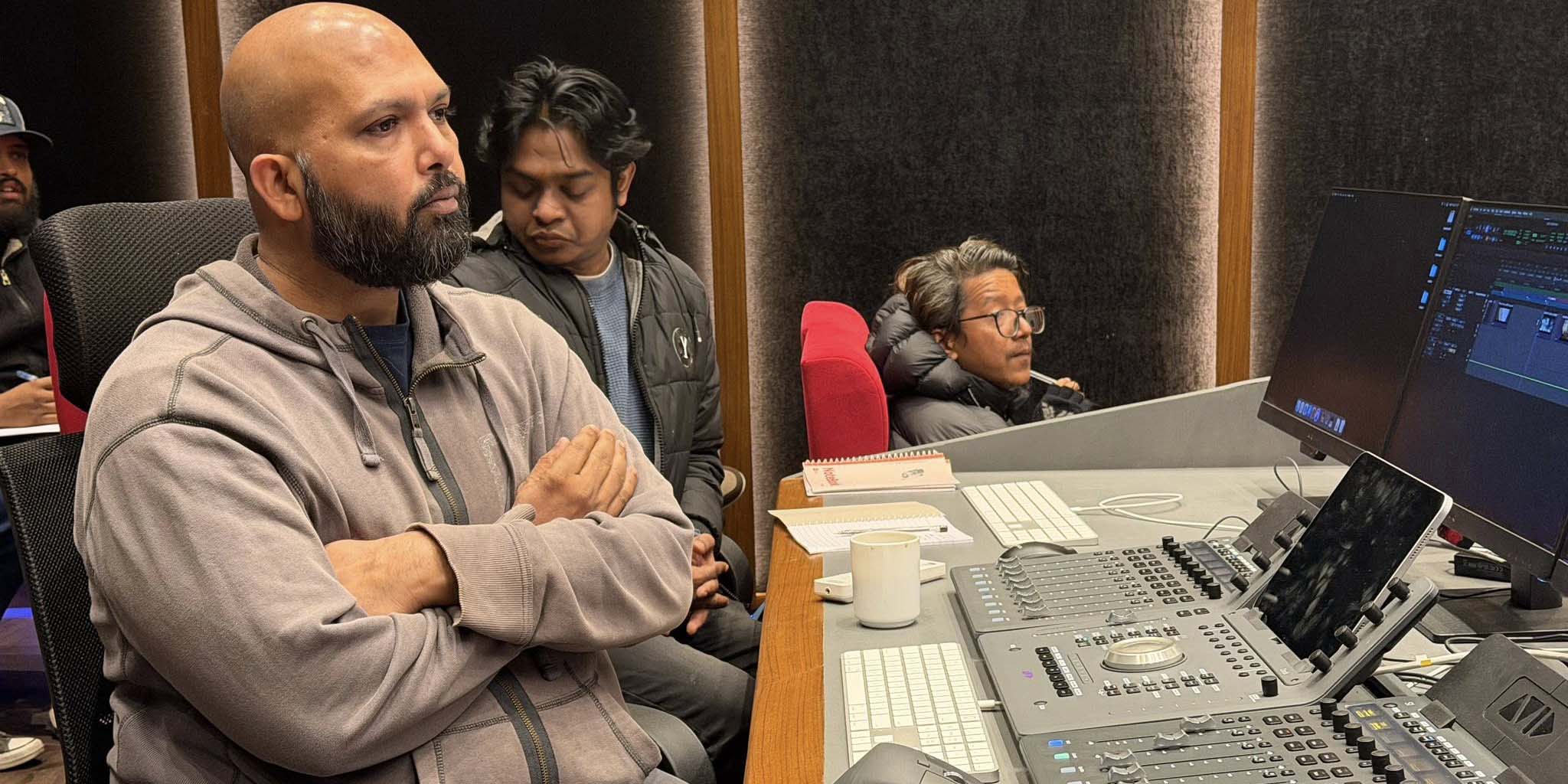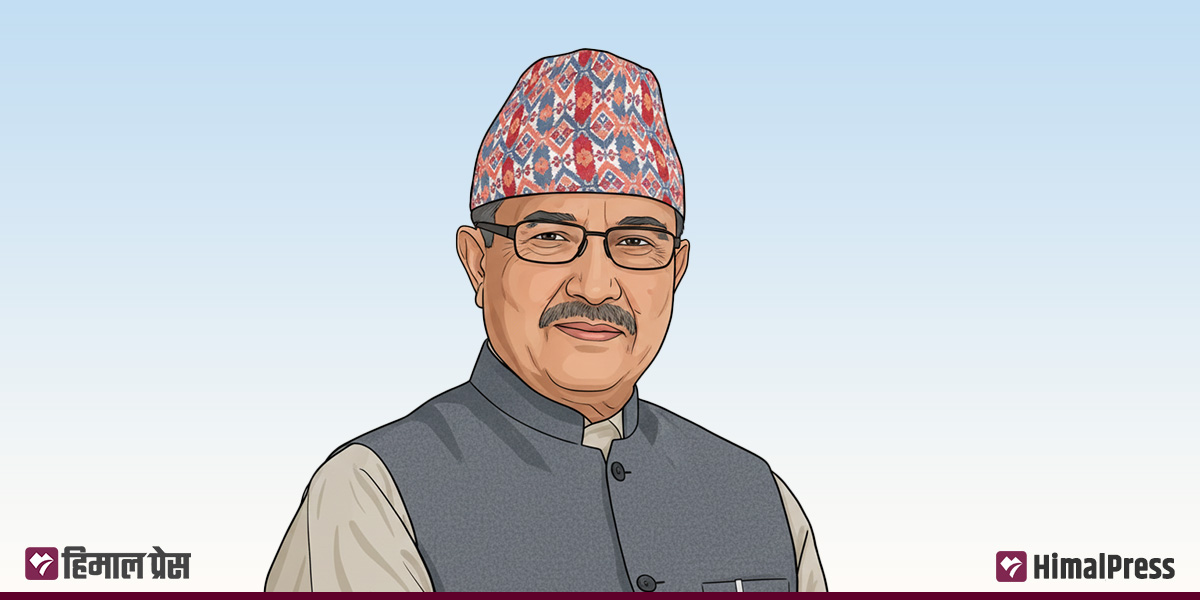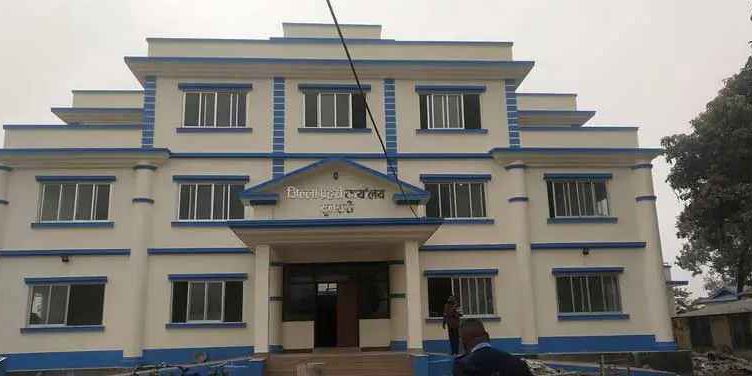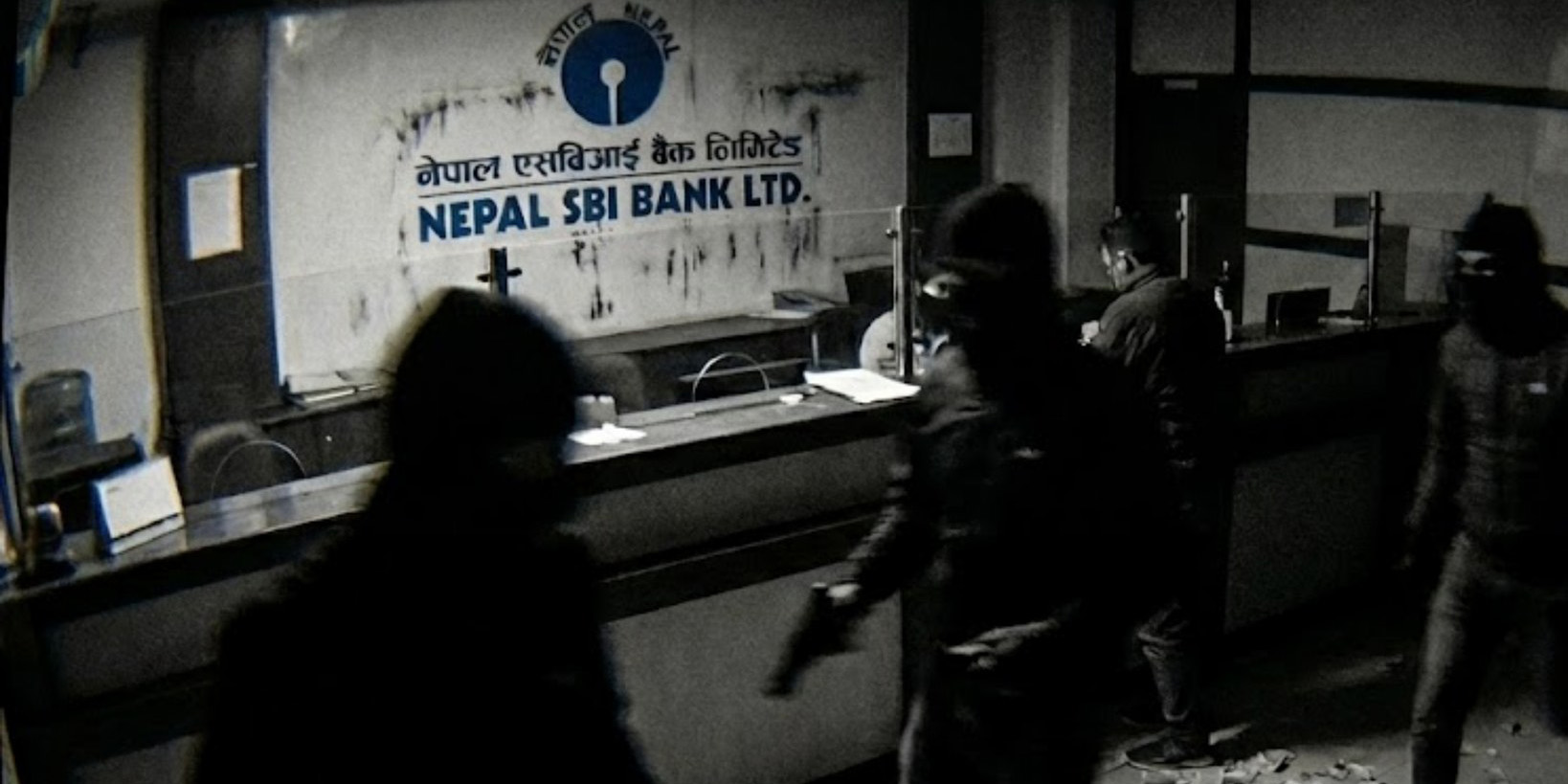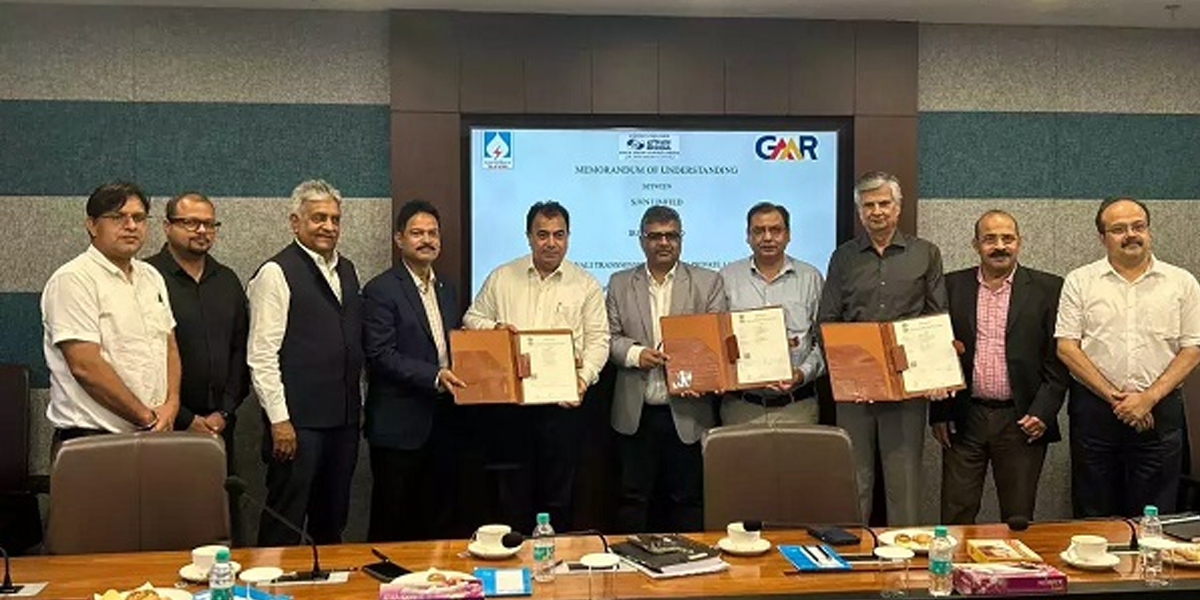 Officials of GMR, SJVN and IREDA after exchanging the MoU.
Officials of GMR, SJVN and IREDA after exchanging the MoU.
KATHMANDU: The development of the long-stalled Upper Karnali Hydropower Ltd (900 MW) has taken yet another turn with the entry of the Indian Renewable Energy Development Agency (IREDA) Ltd.
IREDA, an agency under India’s Ministry of New and Renewable Energy, has signed a memorandum of understanding (MoU) to partner with GMR to implement the mega hydropower project as the project’s license was nearing expiry.
Indian company GMR Energy, which holds the license to develop the project, had earlier brought in SJVN Limited, another Indian government entity, as a partner. GMR Energy has pledged 27% free equity in the developer company to the Nepal Electricity Authority (NEA). Although the project development agreement was signed in September 2014, GMR has failed to secure funding for the project within the 10-year timeframe.
After facing financial difficulties, GMR had been courting different companies, including Électricité de France, the French multinational electric utility company, to develop the project.
While the Office of the Investment Board Nepal (OIBN) had been extending the deadline to secure financial closure every two years, the Supreme Court ordered the government last year to stop extending the deadline. Hearing a writ petition filed by Advocate Ratan Bhandari, the constitutional bench of the apex court added 186 days to the project’s timeline, covering the period from the interim order to the final decision. This effectively gave GMR an additional five months beyond the deadline.
GMR seems to be making optimum use of this reprieve provided by the apex court to save its license. Many have interpreted the MoU with IREDA as GMR’s latest move to secure its license.
Water resource expert Suryanath Upadhyay accused government officials of being complicit in India’s strategy to monopolize Nepal’s water resources. “India has always had its eyes on Nepal’s water. Our political leadership is always ready to fulfill India’s interests,” he added.
Upadhyay suspects that those involved in the decision-making process for deadline extensions may have received hidden benefits from the developer.
OIBN officials say that GMR has been seeking extensions based on claims of an agreement to sell 500 MW of electricity to Bangladesh, progress on trilateral power trade, and progress in securing investment.
Nepal awarded the Arun III (900 MW) and Upper Karnali projects to India’s SJVN and GMR, respectively, through competitive bidding after OIBN was established in 2011. While Arun III has already achieved about 82% progress, Upper Karnali is yet to go into implementation.
Out of five large projects on the Arun River basin, SJVN has received the license of the Lower Arun (679 MW), while it is forming a joint venture with NEA for Arun 4. It is also eyeing the Upper Arun project, which NEA plans to develop with World Bank financing. The government is implementing Arun Kimathanka (454 MW) under the ‘people’s hydro’ program. Although the World Bank has reached an understanding to invest $1 billion in the project, the signing of the loan agreement has become uncertain due to Indian interference.
Nepal has given most of the large hydropower projects to India. India’s NHPC has received licenses to build the West Seti, Seti River 6, and Phukot Karnali projects. Likewise, there were discussions about awarding the Mugu Karnali project to Indian conglomerate Adani Group, but it hasn’t moved forward.
OIBN has said that it hasn’t received any information about the agreements and MoUs that GMR has signed for Upper Karnali’s development. Its proposal for partnership with SJVN has not yet been approved by the OIBN.

 Himal Press
Himal Press 